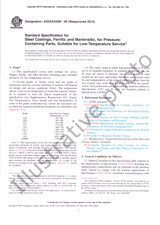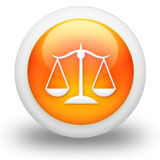We need your consent to use the individual data so that you can see information about your interests, among other things. Click "OK" to give your consent.
ASTM D8128-22
Standard Guide for Monitoring Failure Mode Progression in Industrial Applications with Rolling Element Ball Type Bearings
Translate name
STANDARD published on 1.5.2022
The information about the standard:
Designation standards: ASTM D8128-22
Publication date standards: 1.5.2022
SKU: NS-1057600
The number of pages: 9
Approximate weight : 27 g (0.06 lbs)
Country: American technical standard
Category: Technical standards ASTM
The category - similar standards:
Annotation of standard text ASTM D8128-22 :
Keywords:
ICS Number Code 75.100 (Lubricants, industrial oils and related products)
Additional information
| Significance and Use |
|
5.1?This guide is intended as a guideline for justification of oil test selection for monitoring rolling element ball type bearing conditions in industrial applications. Continuous benchmarking against similar applications is required to ensure lessons learned are continuously implemented. 5.2?Selection of oil tests for the purpose of detecting rolling element ball type bearing failure modes requires good understanding of equipment design, operating requirements and surrounding conditions. Specifically, detailed knowledge is required on bearing design configuration, dimensional tolerances, load directions, design limitations, lubrication mechanisms, lubricant characteristics, and metallurgy of lubricated surfaces including bearing cages. Equipment criticality and accessibility as well as application of other monitoring techniques (for example, vibration, ultrasound or thermal images) are also critical information in this analysis process. In addition, detailed knowledge on the lubricating oil is paramount. 5.3?To properly apply the FMEA methodology users must understand the changes the system may encounter during all operating modes, their impact on design functions and available monitoring techniques capable of detecting these changes. To assist this approach, Section 6 will provide extensive descriptions on the rolling element ball type bearing failure modes, their causes and effects. 5.4?It is recognized that in most industrial applications vibration monitoring is the primary condition monitoring technique applied to detect failure modes, causes and effects in rolling element ball type bearingswhile oil analysis is primarily used to monitor the lubricating oil properties. In the recent years, however, there is a trend toward using oil analysis in order to provide earlier detection of some failures of rolling element ball type bearings. This is particularly applicable to complex dynamic systems such as compressors, gearboxes and some gas turbines where obtaining vibration spectra and their analysis may be more difficult. |
| 1. Scope |
|
1.1?This guide approaches oil analysis from a failure standpoint and includes both the rolling element ball type bearing wear and fluid deterioration in industrial application. 1.2?This guide pertains to improving equipment reliability, reducing maintenance costs and enhancing the condition-based maintenance program primarily for industrial machinery by applying analytical methodology to oil analysis program for the purpose of detecting specific failure modes. 1.3?This guide reinforces requirements for appropriate assembly, operation within the original design envelope as well as the need for condition-based and time-based maintenance. 1.4?This guide covers the principles of Failure Mode and Effect Analysis (FMEA) as described in Guide D7874 and its relationship to rolling element ball type bearing wear in industrial application and its fluid deterioration. 1.5?This standard does not purport to address all of the safety concerns, if any, associated with its use. It is the responsibility of the user of this standard to establish appropriate safety, health, and environmental practices and determine the applicability of regulatory limitations prior to use. 1.6?This international standard was developed in accordance with internationally recognized principles on standardization established in the Decision on Principles for the Development of International Standards, Guides and Recommendations issued by the World Trade Organization Technical Barriers to Trade (TBT) Committee. |
We recommend:
Updating of laws
Do you want to be sure about the validity of used regulations?
We offer you a solution so that you could use valid and updated legislative regulations.
Would you like to get more information? Look at this page.




 Cookies
Cookies
